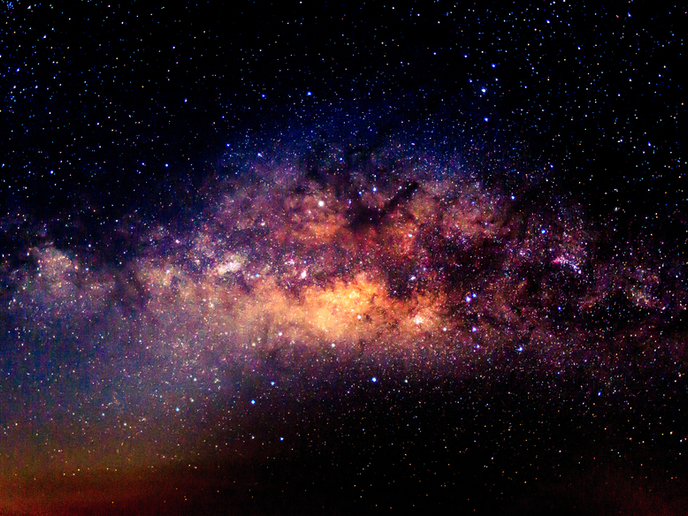Dust clouds shed light on the Milky Way’s evolution
Scientists supported by the EU-funded EXPLORE project have taken another step towards unravelling the mysteries of the Milky Way – the galaxy made of billions of stars, gas and dust that we call home. Using new data from an interactive tool that exploits different space science data sets, they have created an animation to model dust in the Milky Way. Their work is described in a study published in the journal ‘Astronomy & Astrophysics’. The interactive tool combined data from Gaia, the European Space Agency’s ambitious mission to create a 3D map of our entire galaxy, with Two Micron All Sky Survey (2MASS) measurements. Using these data, it created 3D maps of the extinction – the dimming of light from stars and other distant objects – caused by interstellar dust looking out from Earth towards the centre of the Milky Way. The extinction process is shown in a YouTube video.
Thinning dust clouds and windows
The 3D maps have made it possible to see the outlines of the galaxy taking shape as we look farther and farther out from planet Earth. As reported in a press release posted on the EXPLORE project website, they reveal the total accumulation of dust from Earth’s vicinity to around 13 000 light years towards the galactic centre – one tenth of the way across the Milky Way. Close to our planet there is dust swirling around, but as you go farther out, the dust along the galactic plane clears. The animation has also revealed two windows – one above and one below the galactic plane. “Dust clouds are related to the formation and death of stars, so their distribution tells a story of how structures formed in the galaxy and how the galaxy evolves,” states study senior author Dr Nick Cox of EXPLORE project coordinator ACRI-ST, France, in the press release. “The maps are also important for cosmologists in revealing regions where there is no dust and we can have a clear, unobstructed view out of the Milky Way to study the Universe beyond, such as to make Deep Field observations with Hubble or the new James Webb Space Telescope.” Prof. Albert Zijlstra of EXPLORE project partner The University of Manchester, United Kingdom, comments: “State-of-the-art machine learning and visual analytics have the power to greatly enhance scientific return and discovery for space science missions, but their use is still relatively novel in the field of astronomy. With a constant stream of new data, such as the recent third release of Gaia data in June 2022, we have an increasing wealth of information to mine – beyond the scope of what humans could process in a lifetime. We need tools like the ones we are developing for EXPLORE to support scientific discovery, such as by helping us to characterise properties within the data, or to pick out the most interesting or unusual features and structures.” In addition to galactic science, EXPLORE (Innovative Scientific Data Exploration and Exploitation Applications for Space Sciences) is also focusing on lunar observation and stellar characterisation. The project ends in October 2023. For more information, please see: EXPLORE project website
Keywords
EXPLORE, Milky Way, galaxy, dust, star, space, dust extinction



